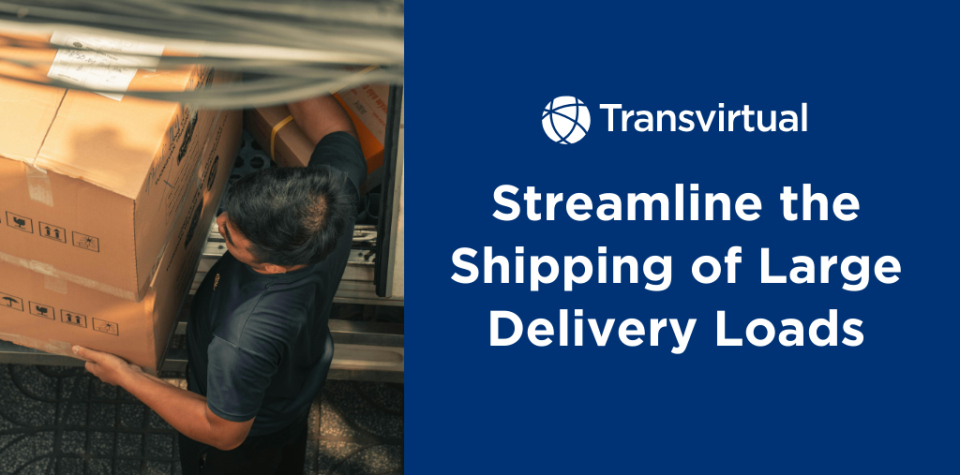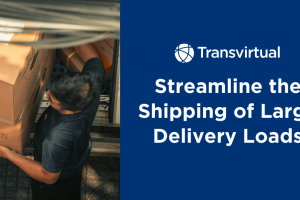Table of Contents
Shipping large delivery loads involves inherent challenges. Fortunately, you can overcome many of them while increasing productivity and efficiency. Streamlining your shipping process enables you to reach milestones and stay competitive. Which steps cause the most meaningful impacts?
Estimate the Associated Budget
Calculate your anticipated shipping costs. It may be worth spending more for specific offerings, especially expensive or custom-made products. For example, some shipping partners offer signature-upon-delivery services. Those help you verify that the intended recipient received the goods.
Additionally, companies typically charge special-handling fees. Learning about those particulars before finalizing decisions keeps you well-informed and reduces the chances of overpaying. Compare the provided rates to see how businesses differ, too.
A June 2025 survey of supply chain and logistics leaders found that 44% lacked adequate pricing information, causing frustration among some. An executive from the company conducting the study noted that applying incremental rate and fee changes without warning has become more common.
Asking providers for locked-in prices could proactively prevent those situations. Additionally, declining long-term contracts until businesses prove trustworthiness gives you more flexibility to change shipping partners if the initial company alters its fee structure.
Assess Options for Protecting Goods in Transit
Large loads may need additional protective measures to prevent damage during transit. If your shipments contain hazardous materials, federal and state regulations have specific packaging requirements, including labeling the exterior and providing emergency contact information.
Amazon protects massive quantities of parcels in flight by placing them into metal containers called unit load devices. They feature plane-specific dimensions and hold hundreds of packages. Each aircraft accommodates 12 to 39, depending on its size.
You may have a lower budget, but you should still explore viable solutions. Foam pieces, bubble wrap and tissue paper can provide shock protection, while appropriately sized packaging stops contents from shifting as vehicles move.
Consider how transportation modes have unique risks. Many shipping companies offer multimodal transport, so you should evaluate the threats associated with each phase. Specialists can run simulations or lab tests in controlled environments to reveal the likeliest sources of transit-related damage. Additionally, fleet industry peers can suggest steps they took to safeguard large loads en route to their destinations.
Track the options you try and monitor how frequently customers report damaged goods. That information can help you confirm what works well. Maintaining an updated packaging supplier list is also a best practice, especially if external partners change their designs or materials, since alterations may result in more broken products.
Engage With Service Providers
Logistics companies are fantastic resources for shipping large loads. Experts at reputable businesses assist with preplanning requirements and oversee numerous necessities. These parties have specialty equipment to help bulky goods move smoothly.
For example, heavy-duty models of hydraulic platform trailers have torsion-resistant frames that can bear bulky shipments without bending or breaking. Alternatively, removable goosenecks feature detachable front sections, which are helpful for shipping cars or construction equipment. They allow people to drive the product onto vehicle beds, facilitating faster loading times.
Pre-shipping conversations should cover regulatory restrictions, safety mandates and proposed routes. Streamline the procedures by checking whether your provider can handle permit requirements. Additionally, ask about employees’ experience handling oversized loads and the company’s accident record. Such information can reassure you that the providers have the necessary knowledge to prevent delays and damage.
Assess Potential Seasonal Challenges
Streamlining shipping processes involves understanding and addressing unique obstacles at specific times of the year. Heat exhaustion becomes more likely in hot, humid conditions, posing risks to those loading vehicles or doing other strenuous activities. If your bulky loads contain perishable goods, changing the packaging material or structure can accommodate ice packs or insulate the contents.
Conversely, increased shipping demands during the holiday season may require you to book services earlier than anticipated to ensure availability. Harsh winter weather also temporarily halts construction projects. Storing equipment prolongs its lifespan and protects it from the elements. However, owners preparing for extended disuse typically rely on large-load specialists to maintain safety.
Retrieve statistics about past weather phenomena to determine if blizzards, floods, or similar challenges will likely disrupt your plans. Starting a database that indicates when those events previously occurred and which parts of the country they affected gives you an excellent reference point to use throughout the year.
Although you cannot predict future events with certainty, knowing particular generalities could help you track trends. Analyzing that data and confirming things such as the average length of a hurricane season or when a state typically gets its last snowstorm before warmer weather arrives could improve shipping processes. Assessing alternate routes to address temporary road closures also increases preparedness.
Implement Real-Time Tracking Solutions
Most logistical Internet of Things sensors allow you to check the location of your large load at any time and track the expected arrival date. Some technologies also sense rough handling or when perishable goods are kept outside the optimal temperature for too long. Immediate alerts for these events let you be more proactive, eliminating the possibility of products reaching their destinations spoiled or broken.
Real-time tracking apps can also increase customer satisfaction by providing better visibility. One consumer electronics retailer rolled out an option for shoppers who purchased large appliances. These consumers receive a notification on the morning of a scheduled delivery and a four-hour arrival window.
Once the driver departs with the goods, people receive information that allows them to track the journey in real time and see the number of stops the vehicle will make before it reaches them. Once a customer is next on the route, they receive street-view data and an email notification of the final arrival time.
Consider deploying a similar solution, especially if you regularly ship large, expensive items. Customers will appreciate the information, particularly if they need to change their schedules or ask friends to help them with the deliveries upon arrival.
Start Building a Better Shipping Process
Streamlining your shipping strategy for large goods takes time, dedication, and collaboration. However, these tips can get you off to a strong start. Documenting what you learn when making improvements will highlight the best changes and which areas to concentrate on moving forward.


